Ethical Media Alliance: How to Reshape Ad Spending to Support Public Interest Journalism

The Ethical Media Alliance (EMA) in Romania aims to tackle quantitative metrics: the main flaw of the digital advertising ecosystem that undermines public interest journalism. The initiative aims to allocate funds based on ethical principles to support trustworthy media in achieving a positive social impact and financial sustainability, while also securing brand safety for advertisers.
In the age of web 2.0, the advertising market disproportionally incentivises clickbait content. The quest for the higher reach at the lowest cost has led to an emphasis on viral content, often at the expense of responsible, public interest journalism. However, amidst this challenging landscape, initiatives like the Ethical Media Alliance (EMA) in Romania are emerging as beacons of hope for independent media organisations, especially those dedicated to public interest journalism.
The initiative was born as a “result of frustration over how much money is funnelled to irresponsible content producers,” says Dragos Stanca, EMA’s initiator. He thinks that there is a critical flaw in the digital advertising ecosystem, where the focus on quantitative metrics such as clicks and impressions undermines the value of public interest journalism. This has led even serious publishers to embrace clickbait content to survive in the era of programmatic advertising.
In the first phase of the project, EMA positions itself as a not-for-profit sales house guided by ethical principles, involving journalistic startups and projects often excluded from commercial funding due to their relatively modest audience numbers. Stanca acknowledges the necessity of speaking the language of the advertisers, thereby integrating metrics and key performance indicators (KPIs) into their approach. Additionally, EMA aims to foster a positive social impact by supporting content essential for democracy.
The network currently includes 15 journalistic projects employing over 120 journalists, with a joint monthly reach of 1.2 million users and 550,000 video views on average. Advertisers are required to commit to a minimum one-month campaign that spans across all portals. In other words, the same ad is on display on all the sites thus increasing its reach to a level that, as Stanca puts it, “makes sense for a media buyer.” EMA ensures brand safety by allowing only organisations producing public interest content to join. This guarantees advertisers that their ads will be associated with responsible content.
Furthermore, EMA also reforms the distribution of ad revenue in the network. Half of it is distributed among partners based on the number of employed journalists, while the other half is based on quantitative metrics (35% based on the number of ad impressions and 15% on social media reach). This follows the usual ‘cost per mille’ (CPM) approach, which is the cost an advertiser pays for one thousand views or impressions of an advertisement.
The initiative sets an ambitious target: diverting 1% of the total ad spending in Romania to public interest journalism. In Romania, where the total ad market is €700m a year, with only €30-35m spent online by local companies (out of a total digital ad spending of €255m), the EMA initiative has the potential to double the funds allocated to digital journalism. Currently, no more than €3.5-5 million a year is allocated to digital journalism, according to the initiators of the Ethical Media Alliance.
Stanca believes that shifting even relatively smaller amounts to trustworthy media could significantly enhance their financial sustainability. Particularly for emerging journalistic startups, even a few thousand euros per month can make a significant difference.
Early successes are evident, with the initiative launching last fall and the first campaigns commencing in October. The two largest banks in Romania have joined to date, contributing €35,000 for the first two months as a test campaign.
“Drawing from our experience in the commercial digital brokerage market, I can confidently say that anything that is new takes up to one year to become adopted by the market,” says Stanca, adding that he aims for an ad spending of €100,000 per month by the end of the year.
Recently, he outlined the operating principles of the alliance and presented what his team considers to be an initial format for ethical advertising in a dialogue hosted by independent journalist Petrisor Obae, who operates the media-focused portal Pagina de Media. The principles the EMA operates on aim to create an “ethical algorithm” to be used for the allocation of funds from the ad space. The principles the EMA operates on aim to create an “ethical algorithm” to be used for the allocation of funds from the ad space. The primary goal is to provide enough resources to motivate especially young people to choose a career in journalism, according to Stanca. Moreover, the EMA wants to motivate them to produce content in and for the public interest, “not just to focus on gaining the programmatic advertising revenues or, more seriously, to exclusively serve the interests of media owners with questionable agendas or to write solely for and about brands that are essentially seeking disguised advertising,” Stanca added. “The Ethical Media sales house part is just the first phase of the project; we plan to propose additional initiatives that support an ecosystem which, in our opinion, is essential for the survival of democracy,” he said.
While the initiative is currently confined to Romania, Stanca is open to expansion. As EMA pioneers ethical advertising to support public interest journalism, it could have an impact far beyond national boundaries, ushering in a new era for responsible media funding.
